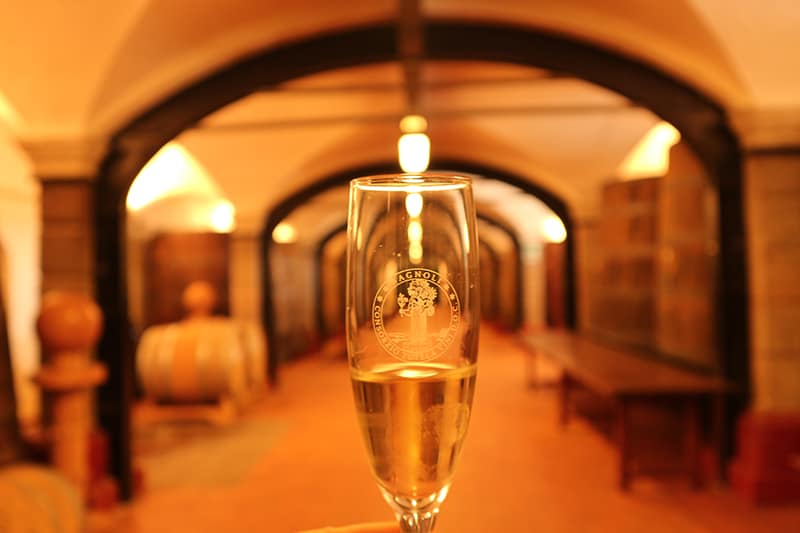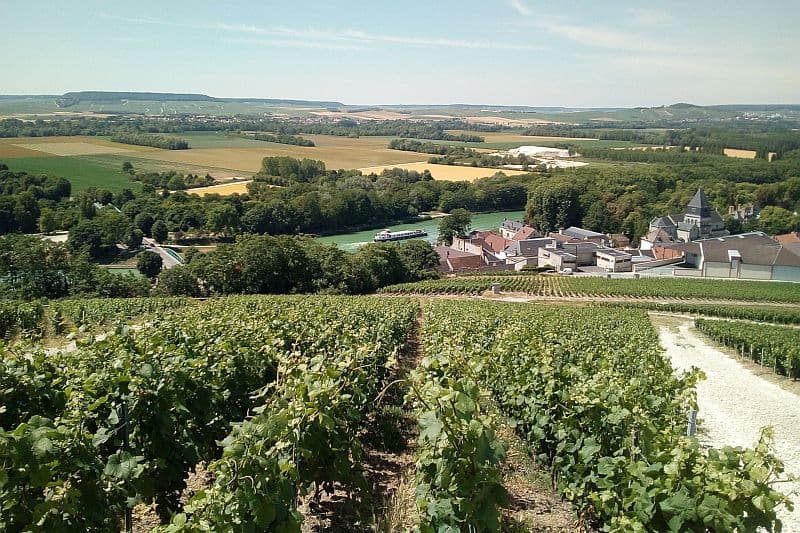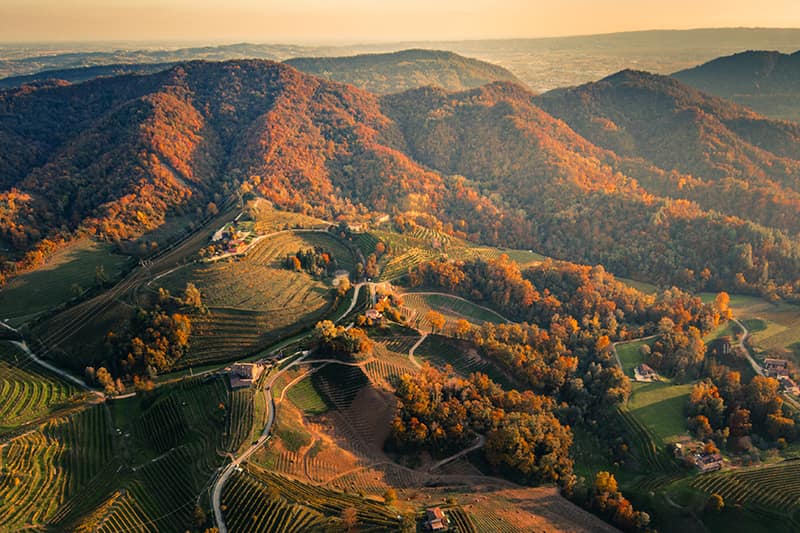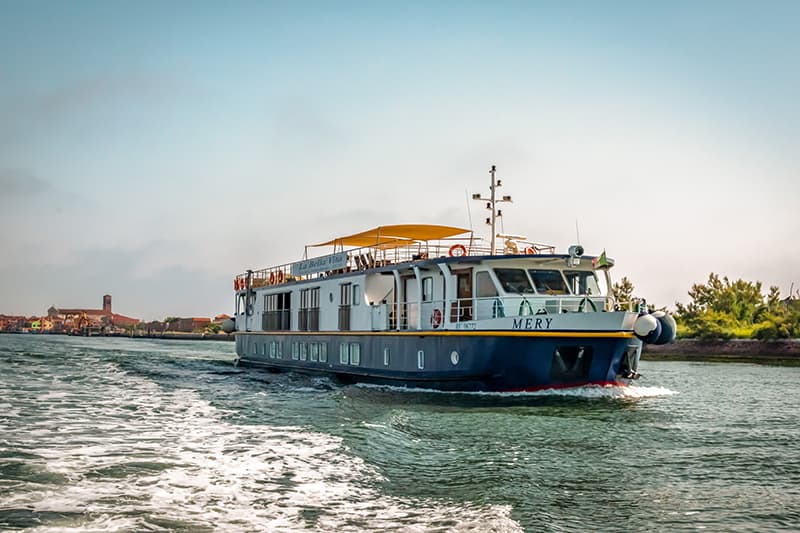Prosecco is the world’s most popular sparkling wine, but do you know your prosecco from your spumante? It’s the drink of parties and celebrations, but what makes this delicious sparkling wine stand out amongst all the other sparkling wines? In this blog, we explore what makes prosecco the most widely consumed drink for special occasions…
Let’s Talk Prosecco: Everything you Need to Know

What is prosecco?
Prosecco is a dry sparkling wine that’s usually made from Glera and Moscato grapes. These popular wines usually feature beautiful floral aromas like wisteria, and tasting notes of melon, pear, peach and apricot. In Italy, sparkling wines must be made from at least 85% of the prosecco grape, known as Glera, to be classed as a prosecco.
Its light composition means it goes well with seafood and is often served as an aperitif. The Italians drink it with food and favour the superiore proseccos, which have a finer flavour. This sparkling wine often has an ABV of between 10% and 12.5%, varying because of the amount of residual sugar left in the fermented wine.
Prosecco wine is stimulated with bubbles of carbon dioxide to make it a sparkling wine. Its bottles are topped with a cork to keep the gas inside and are usually secured with a twisted metal cap and foil. The pressure in sparkling wines is measured in bars, and prosecco usually has around 3 bars.
Traditionally, it’s made using the Charmat or tank method, which means that the wine is fermented twice, and the second stage takes place in a stainless-steel vat. This method is preferred as less expensive and labour intensive than the process of fermenting in the bottle.

What is the difference between prosecco and champagne?
In short, sparkling wine can only be referred to as champagne when it originates from the Champagne region of France. Prosecco is specific to the Veneto region in northern Italy. In terms of technique, the two are also made in different ways: for both wines, the grapes are fermented twice, but with prosecco, at least one fermentation takes place in a stainless-steel vat. Champagne is fermented twice in the bottle.
Fermentation happens when yeast and sugar is added to the grape juices. The yeast feeds on the sugars in the solution, fermenting the grapes and giving off carbon dioxide as a biproduct. The carbon dioxide which is given off during the fermentation process is captured in the sealed containers and retained within the wine solution, to make it fizzy.
Although the difference being between fermentation taking place in a wine bottle and stainless-steel vat seems small, it has a significant effect on the flavour of the sparkling wine produced. Champagne, which is produced in the bottle, is usually drier and obtains more complex flavours, whereas prosecco, being fermented in a stainless-steel vat, takes on a much lighter and less complex finish. Prosecco can also retain some more sweetness than champagne in some varieties.

What is the difference between prosecco and spumante?
In simple terms, the difference between prosecco and spumante sparkling wine is that whilst proseccos are produced using grapes grown in the nine provinces of the Veneto, spumante sparkling wine can be produced using grapes from any region in Italy. The most famous spumante is Asti Spumante from Piedmont in northern Italy.
Technically speaking, whilst spumante is a sparkling wine, prosecco actually has three varieties: sparkling – by far its most popular; frizzante – lightly sparkling with fewer bubbles; and a still variety – ideal as a digestif or perhaps as an accompaniment to fresh, lighter meals such as salads, seafood and some antipasti.
Where does prosecco come from?
Prosecco originates from the little eponymous town of prosecco, near Julia. The grapes are grown in nine large provinces in Northeast Italy but are most commonly associated with the Veneto region. The most prestigious growing area is that of the Conegliano Valdobbiadene region. Here, grapes are grown in picturesque rows of vineyards on the hills between the towns of Conegliano and Valdobbiadene.
In Italy, it is protected with special DOCG status, which recognises that the wine has been made within the nine provinces of origin. Prosecco Superiore is made specifically in the hills between Conegliano and Valdobbiadene and in the area around the town of Asolo.
Every year, Italy manufactures 300 million bottles, and as many as 118 million of these are exported for sale elsewhere in the world. In 2019, the region of Conegliano Valdobbiadene was awarded UNESCO world heritage status, in recognition of the area’s significance to prosecco production.

What’s the history of prosecco?
Prosecco has been produced in Italy for many centuries and was perhaps invented during Roman times. The wine was formerly known as Ribolla but was renamed at the beginning of the sixteenth century because Italians wanted to differentiate it from the same-named wines from Gorizia and Istria, which were less expensive. The new name, ‘prosecco’ is actually Slovenian – from the word ‘Prozek’, meaning ‘path through the woods’ – and is one that would last for more than another four hundred years!
It was first written about by an Englishman, Fynes Moryson, who visited northern Italy in 1593. He wrote about the wine of Pucinum and references an earlier text by Pliny the Elder, saying that the wine had recently been renamed ‘prosecho’. He wrote of the fineness of Italian wines and placed this sparkling wine amongst its most famous.
This celebratory tipple seems to have really developed its recognisable name during the eighteenth century. In 1754, Aureliano Acanti writes of the sweet prosecco wine and its apple bouquet. He also mentions that the grape and location of growing gave the drink its flavour.
The British were the first nation to take an interest in importing prosecco from Italy, so the Italians responded by expanding the growing area for the prosecco grape. Fast-forwarding into the 21st century, America began to import from Italy and by 2008, was reporting the most incredible growth trend.
By the mid 2010s, Britain had become the largest importer of prosecco and was consuming up to a quarter of all Italian production of prosecco wine. That’s a lot of prosecco for a small country!
In 2009, the prosecco grape used to make the drink was renamed ‘Glera’. This was to better protect the place of origin, which has also been awarded Italy’s DOCG, only recognising it as prosecco if it is made in one of the specified nine provinces. Its name therefore only relates to the region where the sparkling wine is grown and ‘glera’ is the name of the grape that makes it.

Salute! A prosecco welcome awaits in Venice...
A cruise aboard the stylish hotel barge, La Bella Vita, starts with a prosecco welcome as you’re greeted by the captain and crew, who are ready to provide outstanding service throughout the 6-night/7-day cruise between Venice and Mantua, or on a colourful island-hopping discovery around the Venice Lagoon. For more information delivered to your doorstep, order a free copy of our brochure or perhaps have a no-obligation chat with a member of our team: Contact Form.
 English
English
 Spanish
Spanish French
French German
German Norwegian
Norwegian Portuguese
Portuguese Swedish
Swedish Italian
Italian Russian
Russian Simplified Chinese
Simplified Chinese Japanese
Japanese